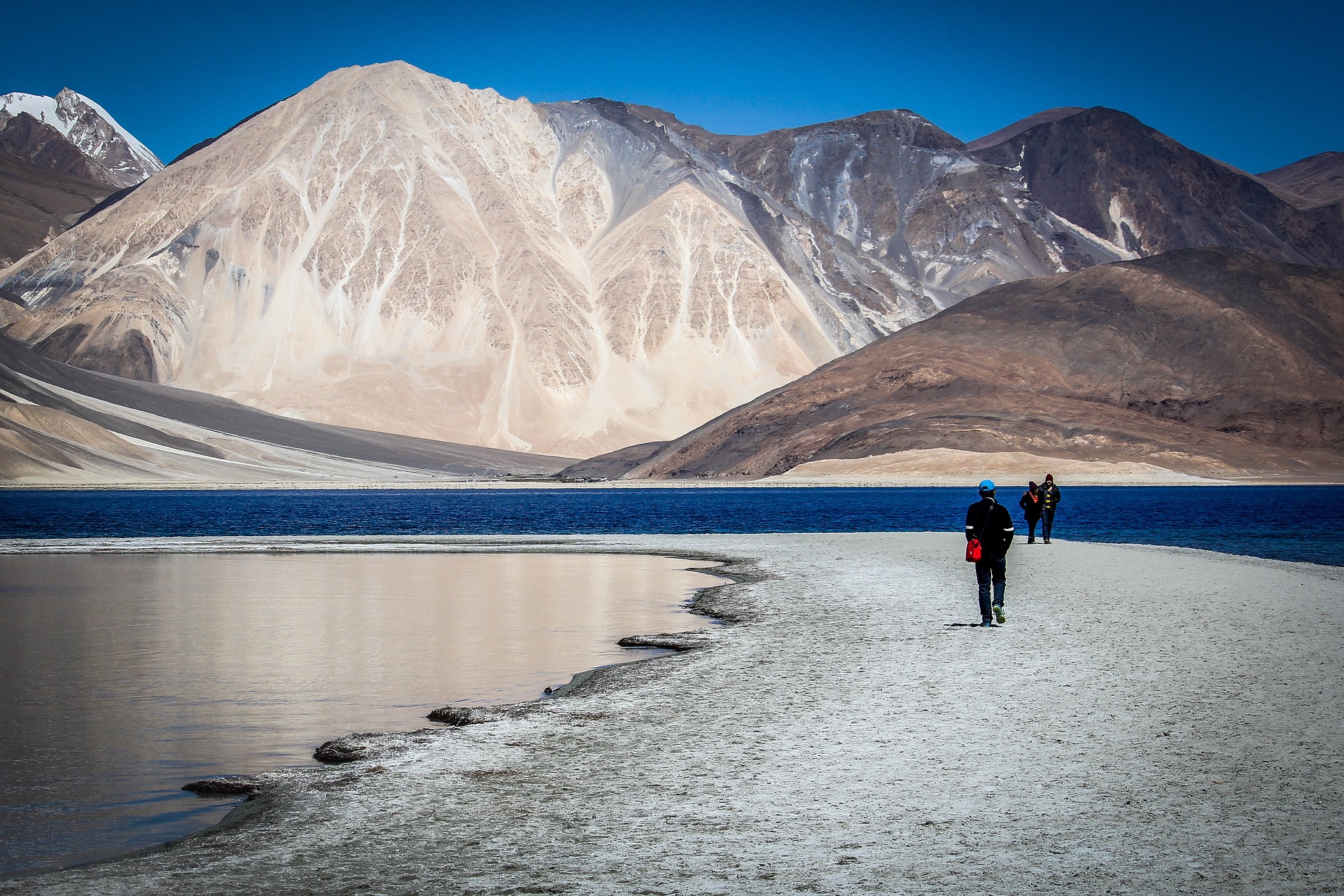Ladakh which is often referred to as “Little Tibet” is a popular tourist destination. This place is famous for its beautiful scenery, majestic mountains, picturesque valleys, passes, Buddhist monasteries and unique culture. It is a region administered under India as a union territory. Before 1974 Ladakh was closed due to security concerns, as it shares boundaries with China and Pakistan. It remained undiscovered for all the tourists whether it was the Indian tourists or the international tourists. It was officially opened in 1974 with 527 visitors visiting the first year.
In recent years tourism in Ladakh has seen a significant growth. More than 60% of the total revenue of Ladakh is generated from tourism sector. Its popularity skyrocketed more with the advent of rapid use of social media. While tourist crowd this place for its scenic beauty and picturesque landscape, but they also face difficulties while travelling.
The problems faced by the tourist in Ladakh includes altitude sickness, harsh weather conditions, and the environmental impact on tourism. Also, water scarcity in this region is a big problem faced by the tourists. The remote location of this place can make travelling difficult because at times the roads are closed due to natural disasters or military movements. Issues regarding transportation facility.
Here is a detailed explanation of the above issues:
Altitude Sickness or Acute Mountain Sickness
Altitude sickness or Acute Mountain Sickness is basically a condition where the person experiences physical distress and finds it difficult to adjust to the lower oxygen levels in higher altitudes. Symptoms can vary from headaches, nausea, dizziness, vomiting, fatigue and even shortness in breathing. With over 3,000m (9,800 ft), Ladakh is the highest plateau in India. Altitude sickness is a very common phenomena among the tourists. Since the place is located at a higher altitude, the oxygen level is quiet lower compared to other places resulting in difficulty to breathe freely. This can create a trouble for the tourists as it may disrupt their journey. Also, some people might be prone to altitude sickness than others.
One of the major reason tourists face the altitude sickness is because of the rapidly increasing altitude. Ladakh lies about 5,753m (18,875ft) above sea level. While travelling, some tourist might feel sick due to the rapid growth in the altitude. While visiting Ladakh, it is necessary to take precautions before they begin their journey. In this regard, good planning as well as precautions are required to avoid this issue.
The first and the foremost thing tourists can do is to take pause while travelling. In this way it will become easier for them to cope up with the atmosphere in the higher altitudes. This helps them to adjust themselves to the surrounding which in turn helps them to avoid altitude sickness. They can also avoid this by simply keeping themselves hydrated with plenty of water. This also helps them to adjust with their surroundings. Another way in which tourists can avoid getting altitude sickness is not getting intoxicated by smoking or drinking. If somebody’s health condition worsens, immediate medical attention is recommended. These are the few precautions suggested above can keep the tourists out of trouble.
Harsh Weather Conditions
The weather of Ladakh is distinguished as cold, and dry climate because of its high altitude and arid desert environment. Since Ladakh is located at a high altitude, temperatures in those areas fluctuate rapidly. At summer, temperature can rise up to 20-30°C while in winters temperature can drop below -30°C. The harsh weather conditions restrict tourist from enjoying properly. For instance, clear skies can suddenly turn into heavy rain or snowstorms. Fluctuations in temperature can create discomfort among the tourists leading to the disruption of the smooth journey. Proper precautions and mental preparations are very necessary while travelling to these areas.
Water Scarcity
Water scarcity at high altitude places is a common problem. As mentioned earlier Ladakh is a dry arid place. It is situated in the rain shadow of the Himalayan range. As a result, this area receives very less rainfall.
The access for clean drinking water and sanitation is limited. Locals in Ladakh are accustomed with using limited water for their day to day activities. But tourists are not accustomed to these methods. Tourists tend to use more water compared to local, this creates a pressure on the available water resources. Ladakh is dependent mostly on those waters which they receive from melted snow or glaciers. As thousands and thousands of tourists visit in each season, the demand for water increases. Thus, puts an additional pressure on the limited resources.
This shortage of water will lead to sanitation issue as well where maintenance or proper hygiene in hotels, homestays and restaurants cannot be found clean. This can create an inconvenience and will be uncomfortable for the tourists. Due to inadequate waste management, water contamination is inevitable. This is a serious threat to the health of not only to the tourists but also the locals.
Waste Management
The environment of Ladakh is fragile, cold and usually takes a long time to recover. Small quantity of waste can cause long term damage to the environment. With the increase in the number of visitors, waste accumulation is also prevalent. It becomes difficult for this fragile ecosystem to absorb the sudden increase of waste. Untreated waste can take centuries to decompose. These are threat to the wildlife as well as to its landscape.
The waste which are not managed, spoils the scenic beauty of land, which is the main attraction for the tourists. Often places like the monasteries, camping places, trekking areas are littered. This reduces the quality of the travelling experience. Thus, poor waste management affects sanitation and hygiene. It also affects to the health of the tourists which creates an issue while travelling.
Issues Regarding Transportation
Transportation is one of the most essential elements in a tour. As we all know Ladakh is located in the high Himalayas, which is mostly far away from the major cities. Roads are often closed due to snowfall. The mountain roads are often narrow and are damaged either by landslides or avalanches. These makes the road bumpy making it difficult to travel for long hours. It makes the journey uncomfortable, tiring and risky as well.
Frequently flights are also delayed due to unpleasant weather conditions. Flights get cancelled due to bad weather. Public transport is irregular scarce. So, tourists need to be dependent on the private taxis, which are often very expensive. Mechanics are not easy to find if a car or vehicle breakdown because of the harsh terrain. Petrol pumps are limited in this place. All this can create a havoc while travelling, making the journey unpleasant. Roads which require to cross various passes like Khardung La, Chang La, to visit the famous attractions like Pangong Lake, Nubra valley, etc. often remain blocked because of heavy snowfall, landslides or military movements. This restricts the tourists from enjoying and disrupts their plans.
Hotel Issue in Ladakh
Accommodation is another challenge faced by the tourists. During peak season, accommodation becomes an issue due to lack of hotels. This creates a problem for the tourists. As demands increases, the rates of these hotels also increase. Tourists often find difficult to get a budget friendly hotel. Most of the places in Ladakh face frequent power cuts. In offbeat locations of Ladakh like Pangong Lake, Nubra Valley, finding hotels are most difficult. Due to location and harsh climatic conditions, comfort level is often compromised.
Conclusion
To conclude, Ladakh is known for its unmatched scenic beauty, its landscape, majestic valleys and natural beauty, offers tourists a memorable journey. It is necessary to keep in mind that nothing is perfect. Tourists visiting Ladakh will face issues like water scarcity, harsh weather conditions, transportation and many more. These implies on the need for better infrastructure and sustainable tourism practices for the betterment of the tourists visiting this place as well as for the future generations.
To know more about travel and tourism and want us to plan your best travel experience with us call or WhatsApp at +91-9733533000 or you can visit https://www.marinetoalpine.com


